A home automation system seamlessly integrates various household devices and systems to enhance convenience, security, energy efficiency, and overall comfort. This technology connects lighting, climate control, entertainment systems, appliances, and security features to a central hub, enabling remote access and control via smartphones, tablets, or voice commands. Through automation and customization, users can create routines and schedules, such as adjusting the thermostat based on occupancy or turning on lights at sunset. This system provides real-time monitoring, energy management, and interoperability among different devices, making modern living more efficient and enjoyable.
Components of Home Automation System
Central Hub or Controller
The central hub, often referred to as the brain of a home automation system, is crucial for coordinating and managing all connected devices. It acts as the primary interface through which different smart devices communicate and operate cohesively. Central hubs can be standalone units like Samsung SmartThings, or integrated within smart speakers such as Amazon Echo or Google Home. These hubs enable users to control their entire home setup through a single app or interface, facilitating streamlined operations and management of various smart devices. They often support multiple wireless protocols, ensuring compatibility with a wide range of products and allowing for seamless integration and expansion of the home automation network.
Sensors
Sensors are vital components in a home automation system, providing the data necessary for automated responses and monitoring. Motion sensors detect movement, triggering actions such as turning on lights or activating security cameras. Door and window sensors monitor the opening and closing of entry points, enhancing security by sending alerts if unauthorized access is detected. Temperature and humidity sensors track environmental conditions, enabling the system to adjust heating, cooling, and ventilation for optimal comfort and energy efficiency. These sensors contribute to a responsive and intelligent home environment by continuously feeding real-time data to the central hub, which then makes informed decisions based on predefined settings and user preferences.
Actuators
Actuators are devices that carry out actions based on signals received from the central hub, transforming commands into physical operations. Smart lights are a common type of actuator, allowing users to remotely control lighting, adjust brightness, and change colors. Smart plugs and outlets enable the remote control of electrical devices and provide insights into energy consumption. Smart thermostats adjust heating and cooling settings automatically based on user preferences, occupancy, and even weather conditions. By automating these tasks, actuators enhance convenience, improve energy efficiency, and contribute to a more comfortable living environment, responding dynamically to the data received from sensors and user commands.
Security Devices
Security devices in a home automation system provide comprehensive protection and peace of mind. Smart locks offer remote locking and unlocking capabilities and can be integrated with access codes or biometric data for enhanced security. Security cameras provide real-time video surveillance, enabling homeowners to monitor their property from anywhere and receive alerts for any suspicious activity. Alarm systems are triggered by sensors detecting potential security breaches, such as unauthorized entry or unusual movement, and can alert homeowners and emergency services. These devices work together to create a robust security network that deters intruders, monitors activity, and ensures that the home is protected at all times.
Entertainment Systems
Home automation extends to entertainment systems, integrating them for enhanced convenience and control. Smart TVs can be connected to voice assistants and controlled via apps, offering easy access to streaming services and content. Smart speakers not only play music but also serve as hubs for voice commands, controlling other smart devices and retrieving information. Multi-room audio systems allow synchronized or independent playback in different rooms, creating a seamless audio experience throughout the home. By automating entertainment, users can enjoy a more cohesive and convenient setup, easily managing their media and devices through unified interfaces and voice control.
Connectivity
Connectivity is the backbone of any home automation system, enabling communication between devices and the central hub. Wireless protocols such as Wi-Fi are essential for high-bandwidth devices like cameras and streaming systems, while Zigbee and Z-Wave are used for low-power, mesh networking of sensors and actuators, ensuring reliable communication over longer distances. Bluetooth is typically employed for short-range interactions with specific devices. In addition to wireless options, wired connections like Ethernet provide stable and fast links, often used for central hubs or stationary devices. Robust connectivity ensures that all components of the home automation system can effectively communicate and operate together seamlessly.
User Interfaces
User interfaces in home automation systems provide the means for homeowners to interact with and control their devices. Smartphone and tablet apps offer comprehensive remote monitoring and management, enabling users to adjust settings, create schedules, and receive alerts from anywhere. Voice assistants such as Amazon Alexa, Google Assistant, and Apple Siri allow for hands-free control through simple voice commands. Web interfaces accessible through browsers offer another layer of control, providing access to system settings and monitoring from any device with internet access. These interfaces are designed to be user-friendly, making it easy for users to navigate and manage their home automation systems effectively.
Automation and Scheduling
Automation and scheduling are key features that enhance the functionality and convenience of home automation systems. Custom routines allow users to create personalized automation sequences, such as a "Good Morning" routine that gradually turns on lights, adjusts the thermostat, and starts the coffee maker. Schedules can be set for devices to operate at specific times, ensuring that lights turn off at midnight or the thermostat adjusts during work hours to save energy. These automated actions reduce the need for manual intervention, creating a smart home environment that anticipates and responds to the homeowner’s needs and routines, enhancing both convenience and efficiency.
Energy Management
Energy management components in a home automation system help optimize energy consumption and reduce costs. Smart thermostats, lights, and plugs can monitor and adjust their usage based on real-time data and user preferences, ensuring efficient operation. Energy monitoring tools provide insights into the energy consumption of various devices, identifying high-consumption areas and suggesting ways to reduce usage. Automated efficiency features can adjust settings based on occupancy, time of day, or environmental conditions, further enhancing energy savings. By managing energy use intelligently, these components contribute to a more sustainable and cost-effective home environment.
Interoperability
Interoperability is crucial for ensuring that different devices and systems within a home automation setup can communicate and work together effectively. Integration platforms like IFTTT (If This Then That) allow devices from various manufacturers to interact, enabling complex automation scenarios and seamless operation. Ensuring compatibility between devices is essential for creating a cohesive system where smart lights, thermostats, security cameras, and other components can all be controlled and automated through a single interface. This interoperability enhances the user experience by providing a unified and efficient smart home environment that can easily be expanded and customized.
Additional Components
Additional components in a home automation system further enhance functionality and convenience. Smart appliances such as refrigerators, ovens, and washing machines can be controlled and monitored remotely, offering features like energy-efficient operation and maintenance alerts. Smart irrigation systems automate and optimize watering schedules based on weather forecasts and soil moisture levels, contributing to efficient water use and healthy gardens. These additional components integrate with the overall home automation system, providing further opportunities for automation, energy savings, and improved management of household tasks, enhancing the overall smart home experience.
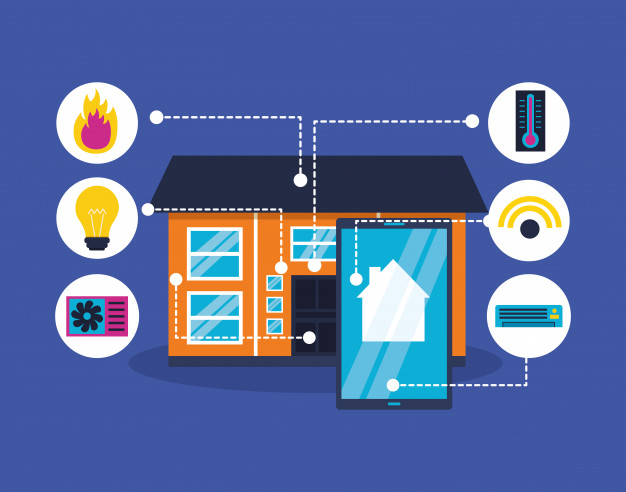
Advantages of Home Automation System
A home automation system offers numerous advantages that significantly enhance the quality of life, convenience, and efficiency for homeowners. Here are some of the key benefits:
1. Increased Convenience
Home automation systems allow for the centralized control of various devices and systems, providing an unparalleled level of convenience. Users can manage lighting, climate, security, entertainment, and appliances from a single app or through voice commands, eliminating the need to manually adjust each device. Automation routines and schedules further streamline daily tasks, such as turning off lights and locking doors at bedtime, or starting the coffee maker and adjusting the thermostat in the morning.
2. Enhanced Security
Home automation significantly bolsters home security through the integration of smart locks, security cameras, motion sensors, and alarm systems. These devices work together to provide comprehensive protection. Homeowners can receive real-time alerts on their smartphones for any suspicious activity, view live video feeds, and remotely control locks to ensure their property is secure. Automated routines can simulate occupancy by turning lights on and off, deterring potential intruders.
3. Energy Efficiency
One of the most practical benefits of home automation is improved energy efficiency. Smart thermostats, lights, and plugs adjust their operation based on occupancy, time of day, and environmental conditions, reducing unnecessary energy consumption. Energy monitoring tools provide insights into usage patterns, helping homeowners identify and address areas of high consumption. Automated systems ensure that devices are only active when needed, significantly lowering utility bills and contributing to environmental sustainability.
4. Improved Comfort
Home automation systems enhance comfort by maintaining optimal living conditions tailored to the homeowner's preferences. Smart thermostats can adjust temperatures automatically based on daily routines and weather forecasts, ensuring a comfortable environment at all times. Automated lighting can be set to adjust brightness and color temperature throughout the day, creating ideal lighting conditions for different activities. Entertainment systems can be controlled effortlessly, providing instant access to preferred content and creating a more enjoyable living experience.
5. Remote Access and Control
The ability to control home automation systems remotely is a significant advantage, offering peace of mind and flexibility. Whether at work, on vacation, or running errands, homeowners can monitor and control their home systems through smartphone apps or web interfaces. This remote access allows for immediate responses to unexpected situations, such as adjusting the thermostat to save energy while away or unlocking the door for a family member who forgot their key.
6. Increased Property Value
Installing a home automation system can enhance the appeal and value of a property. Modern homebuyers are increasingly looking for smart home features that offer convenience, security, and energy efficiency. A well-integrated home automation system can make a property stand out in the market, potentially leading to a higher resale value and faster sale.
7. Customization and Scalability
Home automation systems are highly customizable and scalable, allowing homeowners to start with a few devices and gradually expand their system as needed. This flexibility enables users to tailor their smart home setup to their specific needs and preferences, integrating new technologies and devices over time. The ability to create personalized automation routines and schedules further enhances the user experience, providing a tailored solution that adapts to individual lifestyles.
8. Health and Well-being
Smart home devices contribute to health and well-being by improving indoor air quality, ensuring proper lighting, and supporting better sleep patterns. Air purifiers and humidifiers can be integrated into the system to maintain optimal air quality, while smart lighting systems can adjust brightness and color to support natural circadian rhythms, promoting better sleep and overall health.
9. Time Savings
Automation of routine tasks saves significant time for homeowners, allowing them to focus on more important activities. By automating daily chores like adjusting thermostats, controlling lights, and managing security, homeowners can enjoy a more efficient and stress-free lifestyle. Voice control further enhances this convenience, enabling hands-free operation of various home systems.
10. Enhanced Interconnectivity
A home automation system promotes interconnectivity among various devices, creating a cohesive and integrated smart home environment. This interconnectivity allows for more complex automation scenarios, where multiple devices work together to perform tasks efficiently. For example, a "Good Morning" routine can simultaneously adjust the thermostat, turn on lights, and play music, all triggered by a single command or scheduled event.
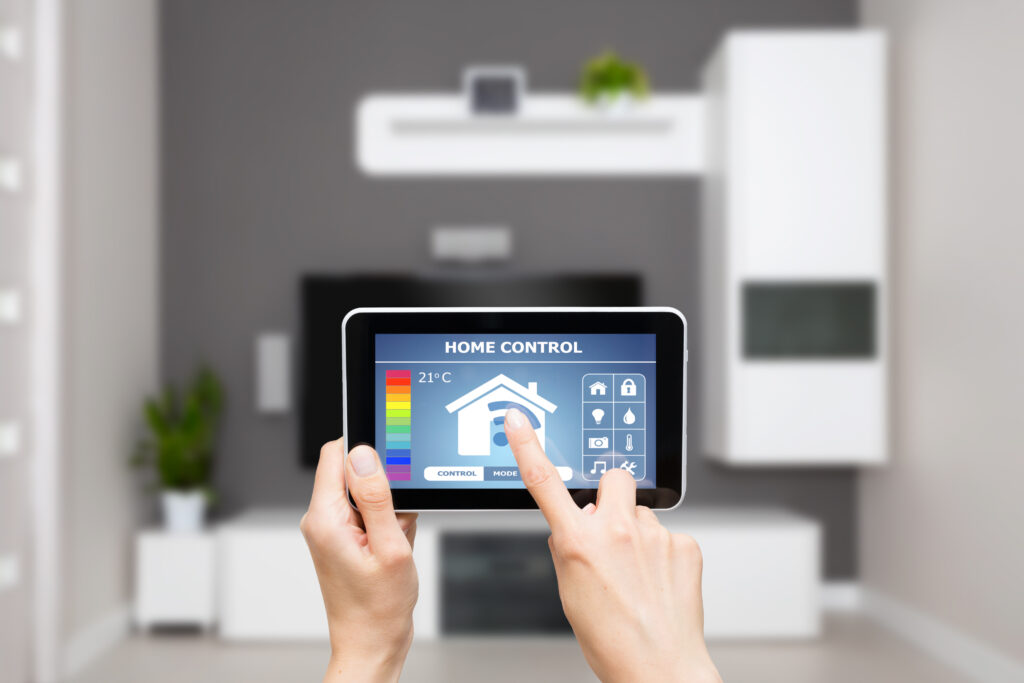
Types of Home Automation System
Wireless Home Automation Systems
Wireless home automation systems utilize wireless communication protocols to connect and control various smart devices throughout the home, eliminating the need for extensive wiring. These systems commonly use protocols such as Wi-Fi for high-bandwidth applications like cameras and streaming devices, Zigbee and Z-Wave for low-power, mesh networking ideal for sensors and other low-bandwidth devices, and Bluetooth for short-range communication with specific gadgets. The primary advantage of wireless systems is their ease of installation and expansion, making them highly suitable for retrofitting existing homes without the need for significant modifications. Additionally, the flexibility in device placement allows homeowners to easily move and add devices as needed. However, potential downsides include the risk of signal interference and the need for a strong, reliable wireless network to ensure smooth operation.
Wired Home Automation Systems
Wired home automation systems rely on physical wiring, such as Ethernet or power lines, to connect and control devices, ensuring high reliability and fast communication. These systems are typically used in new constructions or major renovations where wiring can be seamlessly integrated into the building’s infrastructure. The primary advantage of wired systems is their stability and lack of interference, providing a consistent and robust connection that is less susceptible to signal degradation. Wired systems are ideal for environments where reliability is paramount, such as in large homes or buildings with multiple smart devices. However, the installation process is more complex and costly compared to wireless systems, and it offers less flexibility in device placement since the devices must be connected to the wiring infrastructure.
Power Line Home Automation Systems
Power line home automation systems use the existing electrical wiring in a home to transmit communication signals between devices. This approach eliminates the need for additional wiring, making it an attractive option for retrofitting older homes where installing new cables might be impractical. The main advantage of power line systems is their simplicity and ease of installation, leveraging the home's existing electrical network. However, the performance of these systems can be affected by the quality of the electrical wiring and potential signal interference from other electrical devices. While they offer a convenient solution for home automation, their effectiveness may vary depending on the specific electrical infrastructure of the home.
Hybrid Home Automation Systems
Hybrid home automation systems combine both wired and wireless technologies to create a more flexible and reliable setup. By leveraging the strengths of each approach, hybrid systems can offer enhanced performance and adaptability. For instance, critical devices that require stable, high-speed connections, such as central hubs or high-definition security cameras, can be connected via wired Ethernet, while less critical devices like smart lights and sensors use wireless connections. This combination allows for a robust and scalable system that can be tailored to specific needs and environments, ensuring seamless integration and operation of a diverse range of devices. Hybrid systems are particularly beneficial in larger homes or complex setups where a single connectivity method might not be sufficient.
Cloud-Based Home Automation Systems
Cloud-based home automation systems rely on cloud computing to process and store data, enabling remote access and control through the internet. These systems allow users to monitor and manage their home automation setup from anywhere with an internet connection, providing unparalleled convenience and flexibility. The primary advantage of cloud-based systems is the ability to offload processing and storage to the cloud, reducing the need for powerful local hardware and facilitating regular updates and enhancements. However, they are dependent on a stable internet connection, and potential privacy and security concerns arise due to the data being transmitted and stored remotely. Despite these concerns, cloud-based systems are popular for their ease of use and advanced remote management capabilities.
Proprietary Home Automation Systems
Proprietary home automation systems are designed and controlled by specific manufacturers, offering a closed ecosystem of devices and services. These systems provide seamless integration and reliable performance, as all components are specifically designed to work together. The main advantage of proprietary systems is their ease of setup and consistent user experience, as the manufacturer ensures compatibility and optimal operation across their product range. However, they tend to limit users to the manufacturer's products, reducing flexibility and the ability to integrate third-party devices. This can be a drawback for users who prefer a more customizable and diverse setup, but proprietary systems are often favored for their reliability and user-friendly interfaces.
Open-Source Home Automation Systems
Open-source home automation systems use open-source software and protocols, allowing for extensive customization and integration of a wide range of devices. These systems are ideal for tech-savvy users who want a high level of control over their home automation setup. The primary advantage of open-source systems is their flexibility and broad compatibility, enabling users to integrate devices from different manufacturers and create highly personalized automation routines. Additionally, the open-source community drives innovation and support, continually improving the software. However, these systems may require more technical expertise to set up and maintain, and performance can vary depending on the configuration. Despite these challenges, open-source systems are valued for their customization potential and collaborative development.
Managed Home Automation Systems
Managed home automation systems are professionally installed and maintained by service providers, offering comprehensive support and ongoing maintenance. These systems provide a hassle-free experience for homeowners, ensuring that all devices are optimally installed and configured for seamless operation. The primary advantage of managed systems is the professional expertise that ensures reliable performance and quick resolution of any issues. Typically, these services include a warranty and service guarantee, providing peace of mind for users. However, managed systems are generally more expensive than DIY options, and they may offer less customization and control for users who prefer to have hands-on management of their home automation setup.
Voice-Controlled Home Automation Systems
Voice-controlled home automation systems focus on integrating voice assistants like Amazon Alexa, Google Assistant, or Apple Siri to provide hands-free control of smart devices. These systems enhance convenience and accessibility, allowing users to operate their home automation setup through simple voice commands. The main advantage of voice-controlled systems is their intuitive and user-friendly interface, which is particularly beneficial for users with mobility issues or those who prefer not to use traditional controls. Integration with a wide range of smart devices and services further enhances the functionality of these systems. However, they depend on voice assistant platforms and raise potential privacy concerns due to always-listening devices. Despite these concerns, voice-controlled systems are increasingly popular for their ease of use and accessibility.
Home Automation Market Potential in India
As per Research and Markets Report , India Home Automation Market is estimated to reach US$ 25.64 Billion in 2030 compared to US$ 4.83 Billion in 2022. This growth is fueled by rising demand for convenience, energy efficiency, and security solutions in both residential and commercial sectors. Key technological advancements, including smart thermostats, lighting systems, security cameras, and voice assistants, are driving adoption. Major cities like Pune, Mumbai, and Bangalore are leading hubs, driven by urbanization, increasing disposable incomes, and a tech-savvy population.
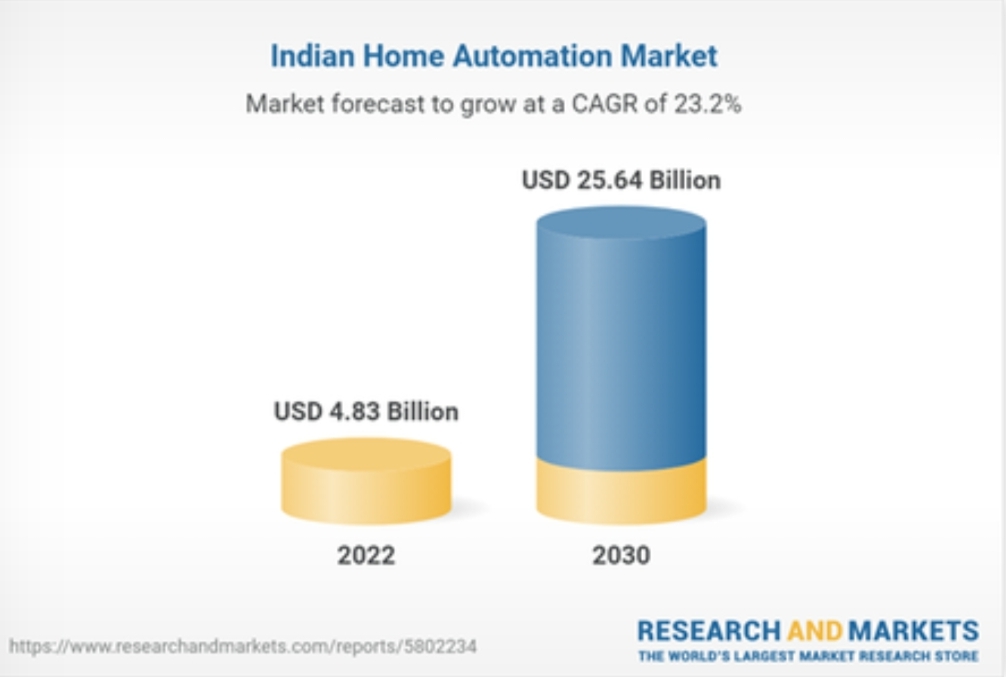
As per Statista Report, The Smart Home market in India shows promising growth potential, with revenue projected to reach USD 6.5 billion in 2024 and expected to grow at a CAGR of 9.14% from 2024 to 2028, reaching USD 9.2 billion. Household penetration is set to rise significantly, from 10.7% in 2024 to 22.0% by 2028, reflecting increasing consumer adoption. Key drivers include rising demand for convenience, efficiency, and security among Indian consumers, alongside advancements in voice-controlled devices and IoT integration. Urban areas with higher disposable incomes are leading adoption, while affordability and tailored product offerings are expanding market reach across diverse socio economic segments. Government initiatives promoting smart cities and sustainable living further bolster market prospects, positioning India as a dynamic growth hub in the global Smart Home landscape.
Conclusion
The adoption of home automation systems represents a significant advancement in modern living, promising unparalleled convenience, efficiency, and security for homeowners. As technology continues to evolve, these systems are becoming more accessible and integrated into everyday life, offering a seamless experience that enhances comfort and reduces energy consumption. However, challenges such as initial costs and concerns over data privacy remain pertinent and require thoughtful consideration. Despite these challenges, the potential benefits of home automation systems are undeniable, paving the way for a future where homes are smarter, safer, and more sustainable. As research and development in this field continue to expand, the possibilities for innovation and improvement in home automation systems are limitless, promising even greater benefits for homeowners in the years to come.
Images- gardnerhomes.com, ssmarttechnologies.com, smarthomemart.in

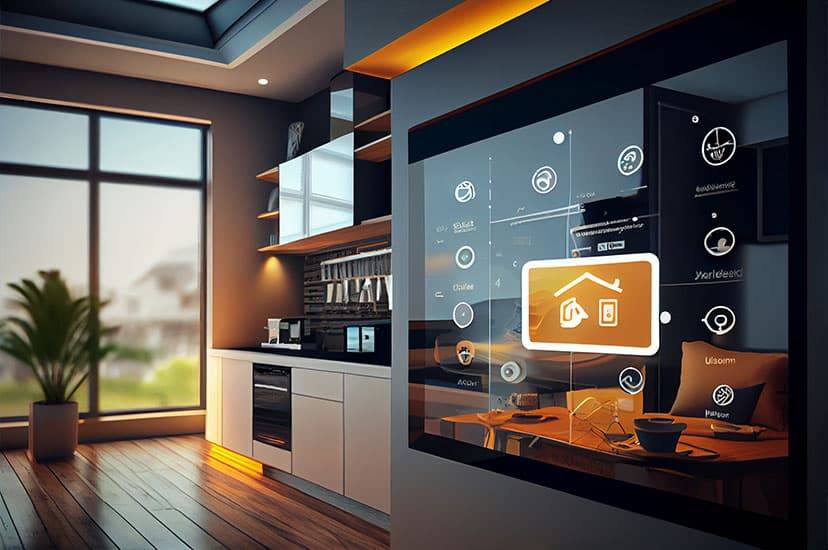

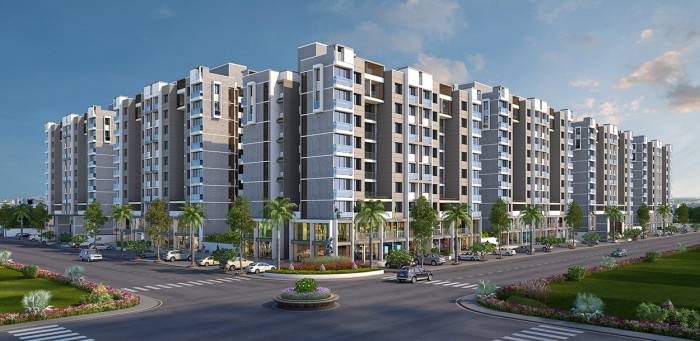




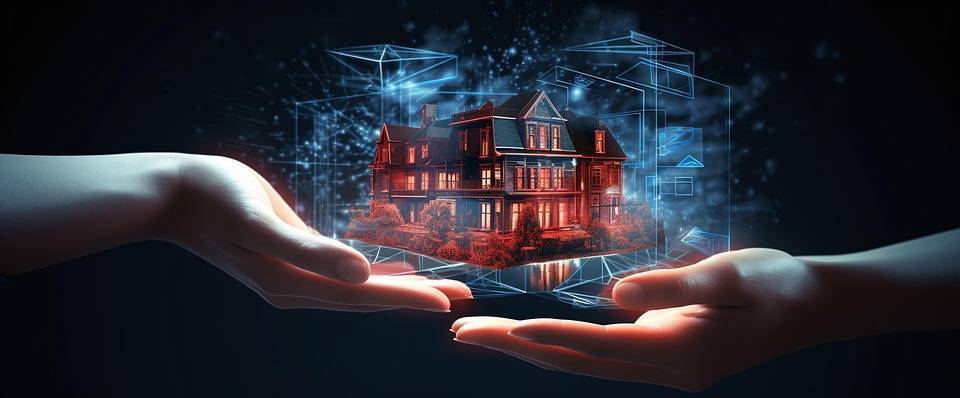
.png)